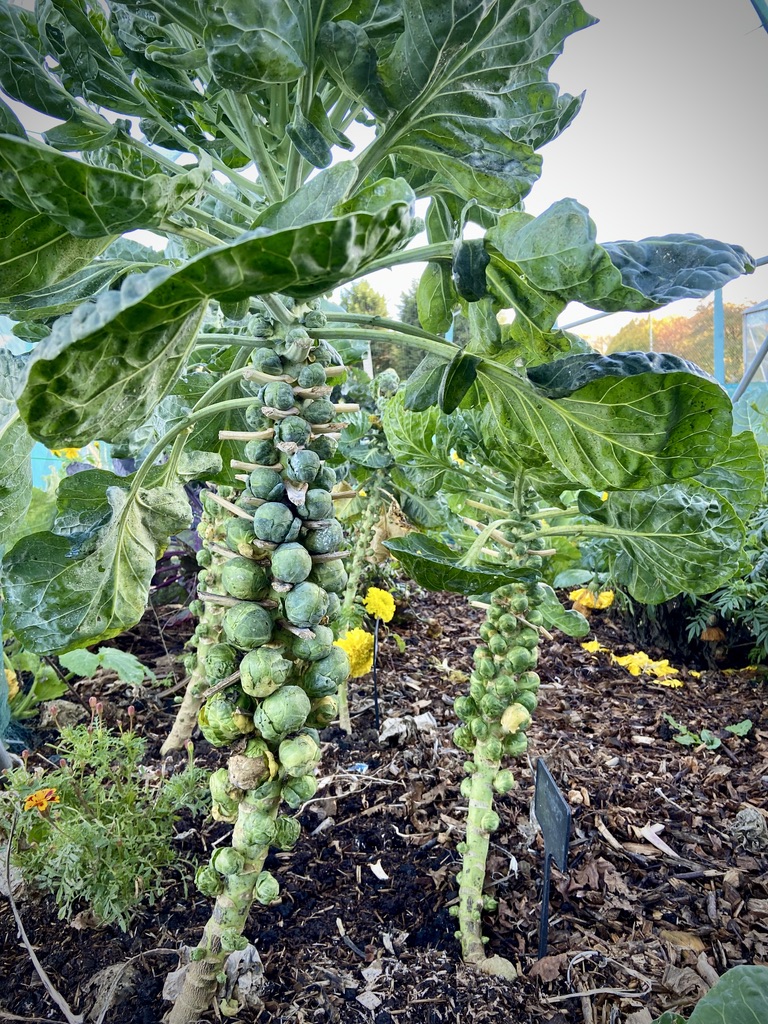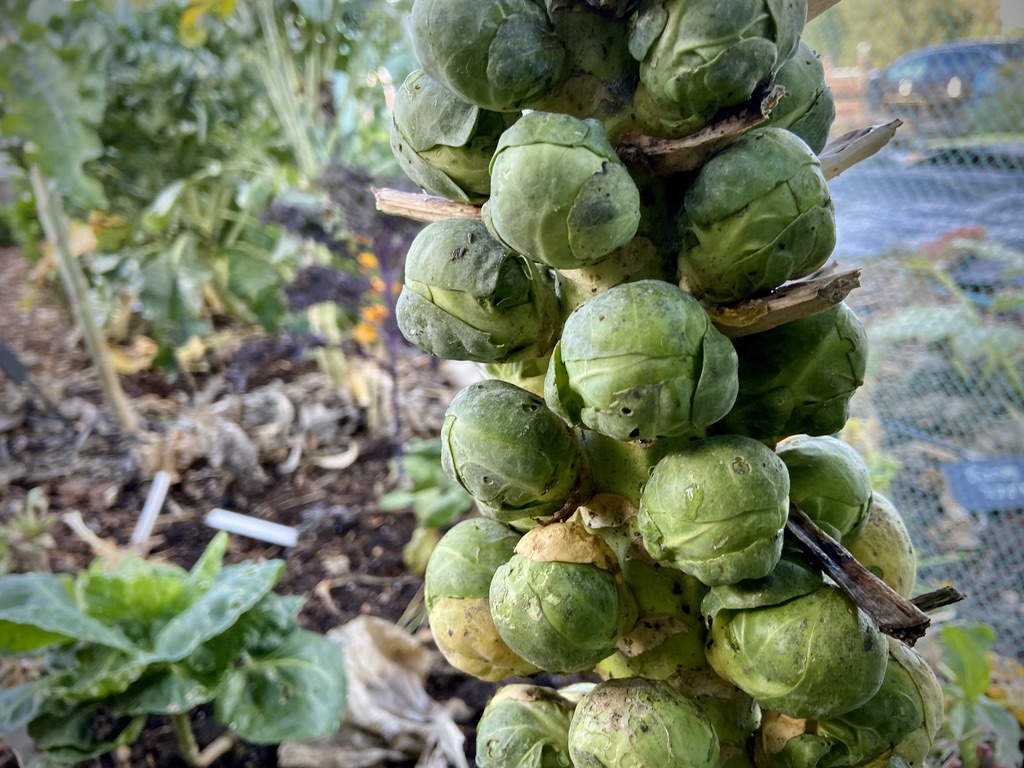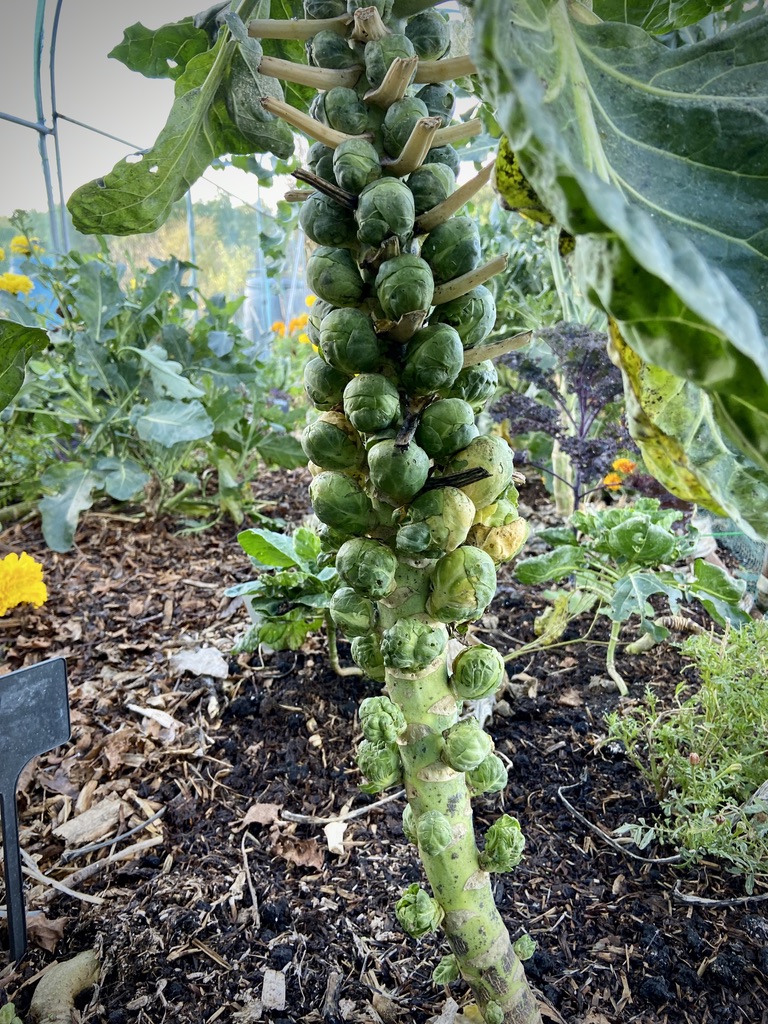The Battle of Bosworth was fought between Henry Tudor and Richard III. Richard lost his horse on the marsh and was cut down, with Henry Tudor who would become Henry VII the victor. Richard was buried without ceremony and the location of the battle and his remains were lost to history until Richards remains were found under a car park in Leicestershire in 2013.
Of all the trees, plants and vegetables to be given a name to commemorate this battle, the sprout is an interesting choice. Perhaps it was because Richard III has been historically vilified as a cruel hunchbacked despot who murdered the princes in the tower, the sprout is also a much maligned vegetable, the divider of the Christmas dinner table.
Perhaps it is because one of the most well known sprouts, Trafalgar, is also named after a battle.
I prefer the first!

In the Kitchen
Bosworth is mild tasting and shouldn’t offend those who do not like sprouts because of their bitterness.
I like my sprouts steamed for 5-10 minutes depending on size and dressed with a little butter and sometimes lemon. You could substitute them for Kale in Kale Bhajias or Singapore Noodles With Crispy Tofu or shred them instead of cabbage in Vegetable Spring rolls or Summer Rolls

Yield and plant health
Bosworth for me suffered badly from aphids and associated sooty mould and as you can see from the plant below there was quite a variance between plants, some were very large, some small. Unfortunately as well the sprouts have a short shelf life one picked with the outer leaves going brown, even on the plant.
For that reason you should cook within a few days of harvesting although you do not need to harvest the whole plant at once, you can take what you need at a time to reduce the problem. Bosworth holds an RHS aware of garden merit which is usually a sign of quality however storage is not part of the criteria. I have grown better and would choose Kalettes or Attwood over Bosworth.
Each sprout plant will yield 50+ sprouts and you should be able to get 3-8 servings from them depending on the size of the plant.
Bosworth should be harvested October – December.

Suppliers

Growing
Sow March to April. You can start sprouts in pots in a green house or outdoors. Sow 0.5 cm deep. In pots sow 1-3 seeds in a 3 inch pot. Outdoors sow thinly in rows 15cm apart. Thin seedlings to one every 7cm or 1 per 3 inch pot. Water lightly until it is time to plant out.
Once the plants have several true leaves plant out in final positions. Sprouts are not too fussy about sunlight but they do need a firm soil so you might struggle with a very sandy soil. In May to early June you will want to plant the sprouts in to their final positions. Harden off indoors plants for a week by leaving them outside during the day and bringing back in at night. Plant out leaving 60-80 cm in either direction. It can be helpful to stake sprout especially if you are on a windy site. They will appreciate a feed of blood fish and bone or another organic fertiliser in the spring and a mulch to conserve water. Commonly growers would sprinkle a little lime on the soil before planting as this helps to avoid club root but also sprouts like a slightly alkaline soil. If you want to do this though do it sparingly and follow manufacturing guidelines. Calcified seaweed and ground chalk are preferable to organic growers. Always wear a face mask and gloves when sprinkling lime and follow manufacturing instructions. Water in well and make sure that they are well watered until established. After this water only if it has been dry for several weeks.
Brassicas can fall victim to cabbage white butterfly or birds. Grow under butterfly netting to avoid this, making sure the netting does not touch the cabbage.
There are three major issues that can affect sprouts, cub root and cabbage root fly.
Blowing is when the sprout button begins to prematurely open so do not form tight little heads. This is mainly caused by soil that is too loose or lacking in nutrition. Firm sprouts in well and ensure your soil is in good heart by mulching every year.
Cub root is a fungal infection that affects grown. Roots will look swollen and distorted and cabbages will fail to thrive. Once on your plot you should not grow brassicas there for up to 20 years. If that is not possible then there are resistant varieties. Raising the PH of the soil with lime also helps.
Cabbage root fly burrow in to the roots of the sprout and the it slowly wilts and dies. If you pull up the plant then you will see maggots on the roots. You can buy little collars that go around the base of the cabbage which stops the fly laying her eggs on the roots.